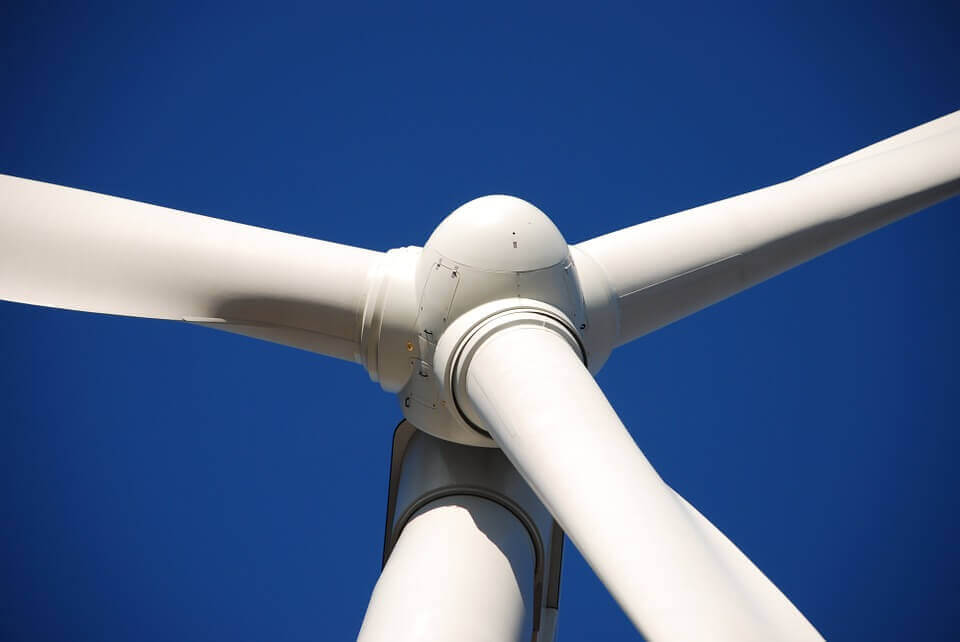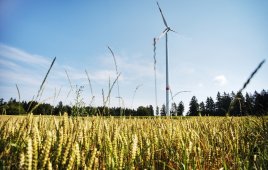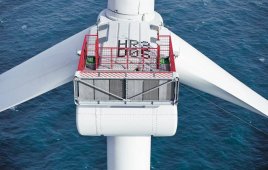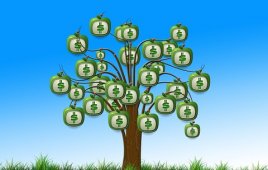(Editor’s Note: This commentary was first published on the China Development Forum’s website on March 18, 2017.)

Green bonds, for funding RE projects such as wind farms, are finding their place in the market. Recognized as a source of overall economic growth, this new, not fully formed instrument is finding a following—most significantly in China.
Green finance is coming of age. It’s being propelled by a variety of forces unclenched by the 2015 Paris Climate Agreement, and the need it created to finance $1 trillion a year in renewable energy investments.
At the same time, long-term investors are also recognizing the threat from greenhouse gasses and have begun, albeit cautiously, to diversify portfolios away from climate risk and carbon-based investment. The final push is coming from corporations as they start to contend with the consequences of increasingly extreme and violent weather and flooding. Gradually, many are starting to see that aggressively managing environmental exposure may be more than risk management; it may be good for business.
In the middle of some of these environmental epiphanies, green bonds are finding their place in the market. Recognized as a source of overall economic growth, this new, not fully formed instrument is finding a following—most significantly in China among government officials who see the potential to use these bonds to shift growth to the real economy. For the rest of the globe, they represent a path to escape the slow-growth, low-interest-rate trap of the past decade.
Last year was a turning point for green bonds. After the Paris Agreement, China and other economies began to fund major investments in climate-friendly energy and infrastructure. The green bond market doubled to almost $83 billion. China went from almost nowhere to becoming the No. 1 issuer with nearly $37 billion of green bonds. Growth also accelerated among corporates, with issuance tripling to $28 billion as energy companies, automakers, even tech companies tapped the green bond market.
For green finance to fulfill its potential for China and the rest of the world, green bonds need to be fully accepted by mainstream investors. With a concerted push by the world’s largest institutions, including major pension funds, the finance industry is responding with assessments, evaluation tools, and processes to provide green finance the reliable metrics and transparency needed for comparison with other investments and widespread acceptance. Standardized evaluations assessing sustainability can also help investors benchmark issues that are not labeled green but have positive climate impact. Next steps can include extending mandates for disclosure of environmental, social, and governance (ESG) performance by issuers and investment managers.
The opportunity and the promise
“… green finance is a major opportunity. By ensuring that capital flows finance long-term projects in countries where growth is most carbon intensive, financial stability can be promoted. … by allocating capital to green technologies, the prospects for an environmentally sustainable recovery in global growth will increase.” –Mark Carney, Governor of the Bank of England and Chair of the Group of Twenty’s Financial Stability Board Is green finance ready to save the world? It may seem an unlikely hero, since money raised to fund environmentally friendly development currently represents only a sliver of the global debt market. That, however, is about to change.
Policymakers, executives, and investors around the world are increasingly ready to recognize green bonds and other financial instruments that support sustainable development as necessary drivers of growth in a global economy. They’re also beginning to feel the consequences of the historical addiction to fossil fuels. Indeed, last September, Mr. Carney hailed green finance as an indispensable tool to mobilize capital for long-term growth and to help economies break out of the slow-growth, low interest rate “trap” of the past decade.
Nowhere is the commitment to green finance more visible than in China, where the government hopes to use green bonds to pursue two urgent goals: to reduce the pollution that’s stifling productivity and threatening its citizens, and to generate steady, sustainable growth in the real economy. In the government’s 13th Five-Year Plan, covering 2016 to 2020, China has laid out an ambitious initiative to meet the nation’s environmental commitments to help cut global greenhouse emissions and address the devastating pollution problem at home, primarily connected to its use of coal and other fossil fuels.
The plan involves, among other things, transformative investments in renewable energy, the production of low-emission vehicles, and new transportation and water infrastructure. It’s a massive undertaking that will require expenditures that could exceed $600 billion a year, with most of it
coming from private funds raised through green finance instruments. The People’s Bank of China has said it expects 85% of the initiative to be built with private funds, which would translate into $300 billion or more in Chinese green bonds a year—by itself three times the total amount of green bonds sold globally in 2016.
Industrializing green finance
China’s boost to the green bond market comes at a time when momentum is already building. Today, green bonds are less than 1% of the total bond market—but the demand for and supply of green investments is rising rapidly as new issuers enter the market and institutional investors look more aggressively for ways to hedge their climate exposure. Around the world, green finance is poised to move into mainstream investing as a safe and effective way to earn a return, protect portfolios from climate risk, and fund sustainable growth. But before green bonds can fulfill their role as enablers of broad economic growth, work still needs to be done to “industrialize” green finance—essentially to create the infrastructure and standardization necessary for participation by a wide spectrum of the investment community.
For the rest of the 8-page Green Finance report: https://goo.gl/bTvqSp
Filed Under: Financing




